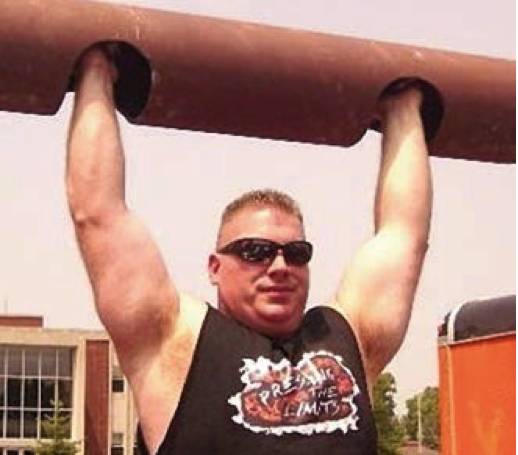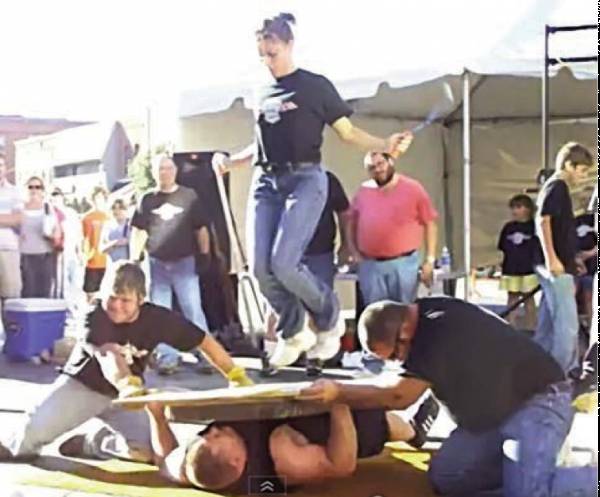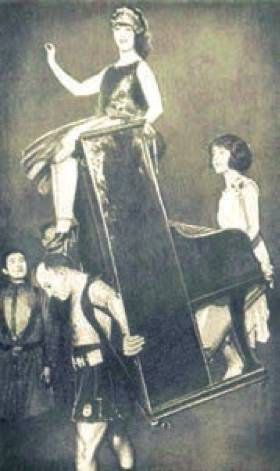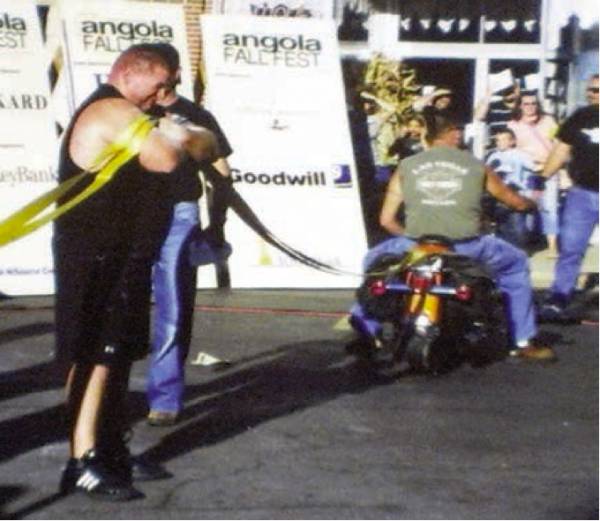The following in an excerpt from Jon Bruney’s book “Neuro-Mass”:
The following in an excerpt from Jon Bruney’s book “Neuro-Mass”:
Over the years there have been many different types of training protocols. In the quest for mass and strength we have seen pre-exhaust sets, negatives, xreps, speed sets, partials, volume training, and so many others. Regardless of method, the goal of all of these protocols is to stimulate growth through maximum muscle recruitment and resistance overload. And over the years, all of these techniques have had their place. But the time has come for a different kind of mass training. A different kind of strength training. It’s time for something REVOLUTIONARY. Enter the Neuro-Set…
A Neuro-Set is comprised of three distinct types of exercises all combined into one brutally effective set. The synergistic result of this exercise combination is increased neuromuscular efficiency and MAXIMUM muscular hypertrophy. This means that the Neuro-Set not only increases muscle size, but also strength and athleticism.
The three types of exercise that make up the Neuro-Set are as follows:
- Grinds – Slow, controlled exercises that place resistance on large muscle groups. These exercises require total-body tension.
- Dynamic Power Drills – Performed quickly, these are movements that require power and speed. They are ballistic in the concentric portion of the movement and also use momentumto deliver an enhanced eccentric-loading effect.
- Isometrics – This category of exercise is performed while maintaining a static position. The joint-angle and muscle-length remain constant for the duration of the contraction.
Each one of these exercise types has historically been quite effective on its own. But when they are synergistically combined into a Neuro-Set, they become a powerful force that smashes through the roadblocks of physique transformation. It is like comparing a firecracker with a stick of dynamite.
The Importance of Grinds
Kettlebell and bodyweight grinds include squats, pulls, and presses all done in a slow controlled manner. The proper execution of these exercises requires sustained total-body tension. The stress that grinds place on the muscular system leads to hypertrophy. To complete a grind, stabilizer muscles must come into play. This builds tremendous overall structural strength. And when done properly, using the correct rep sequence, grinds have the potential to elicit a productive hormonal response.

I have used kettlebell grinds to prepare my body for big performance lifts such as deadlifting the back of an SUV.
Kettlebell front squats and deadlifts help me to practice generating the tension needed for these massive lifts. They also help by improving my performance groove.

Kettlebell grinds will also point out any weak links in your muscular chain. These exercises teach body proper alignment and output for maximum strength. Bodyweight grinds, such as the handstand pushup, train my body to press heavy steel strongman logs overhead. Grinds also teach the body to work together as a unit. These exercises increase body control and coordination, which leads to better athletic performance.
The Importance of Dynamic Power Drills
These ballistic exercises require explosive acceleration and speed. When using kettlebells for these drills, you create a perpetual deceleration and reloading effect, which increases your ability to generate power. And the extreme deceleration from these exercises develops your body’s ability to absorb shock. The explosive drills in Neuro-Mass recruit your fast-twitch muscle fibers, which leads to muscle growth or hypertrophy. The intensity of these drills is such that it leads to a huge increase in your metabolic rate and produces a hybrid effect by enhancing both strength and conditioning.

Dynamic power drills are essential to my personal training. These drills prepare my body for incredible breaking feats. I regularly crush slabs of concrete using my fist, a task that requires incredible speed. For the concrete to break, my fist must be able to deliver maximum impact. This type of breaking is the ultimate expression of acceleration and deceleration; the acceleration toward the concrete, followed by the forced deceleration upon impact. I rely on ballistic kettlebell drills to keep me injury-free while performing this kind of feat. And I have seen an increase in my breaking skills as a direct result of this ballistic kettlebell work.

I have used bodyweight dynamic power drills such as the plyometric push-up to prepare for strongman feats that involve absorbing maximum force. One such feat is where I lay under a bed of nails while my wife jumps rope on top of it. Another feat involves dropping a sixteen-pound bowling ball off a seven foot ladder onto my stomach. Without the ability to absorb impact, I wouldn’t survive. Bodyweight dynamic power drills are a great tool for increasing not only explosive power, but also resiliency.
The Importance of Isometrics
Traditional strength training allows the muscles to contract concentrically (while the muscle shortens), as well as eccentrically (while the muscle lengthens). Isometric exercise focuses on contracting a muscle without changing its length. Imagine pulling a large tent stake that is stuck in the ground. If the stake does not move, this pulling action becomes an isometric exercise. Isometric drills focus on trying to move the unmovable. These exercises have been used for centuries as a way to build unbelievable strength.

Many legendary strongmen have successfully incorporated isometrics into their training regimens. A notable example was the amazing Alexander Zass. Zass was known for his ability to break chains and bend bars. But his most remarkable feats of strength also included:
- Carrying a horse around his shoulders.
- Catching a woman fired from a cannon.
- Walking with a piano strapped to his back.
- Lifting a 500-pound girder with his teeth.
- Being able to absorb punches to his abdomen.
So how did Zass build his amazing strength? Simple. Zass himself credited his extensive use of isometrics. While he was a prisoner of war he performed isometric pulls on his chains and prison bars.
Isometrics can also be performed using only your bodyweight. These are intense contractions resulting from you tensing the muscles and tendons in a flexed position. Many great strongmen have used this technique including Mike Dayton who won Mr. America two times. His feats included breaking police handcuffs, snapping baseball bats in two, and even bending quarters.

Among the feats in my own strength repertoire, my favorite one to perform is called the Human Link. This involves having two Harley Davidson motorcycles attached to my arms. The feat requires me to resist the motorcycles as they attempt to take off in opposite directions, essentially trying to pull me in two. While the feat is extraordinarily difficult to perform, the method I employ to do it is quite simple. I perform an isometric contraction against the resistance of the two motorcycles. And without my extensive background in isometric training, this feat would be impossible to accomplish.
Now let’s look at how these three types of exercises are incorporated into the Neuro-Set.
For chest and upper body development a kettlebell Neuro-Set could look like this:
- GRIND – Kettlebell bench press
- Immediately followed by: DYNAMIC POWER DRILL – Kettlebell rolling speed press
- Immediately followed by: ISOMETRIC – Kettlebell chest crush.
A bodyweight Neuro-Set could look like this:
- GRIND – Neuro-Grip push-ups
- Immediately followed by: DYNAMIC POWER DRILL – Plyometric push-ups
- Immediately followed by: ISOMETRIC – Lower crossover chest contraction
These three combined exercises complete one Neuro-Set. And a Neuro-Set taxes the various growth systems of the body like nothing else.
Click Here to Start Jon Bruney’s Free 3-Week Neuro-Mass Program
“Neuro-Mass” is available for $34.95 at DragonDoor.com.
Click here to read our review of “Neuro-Mass.”






